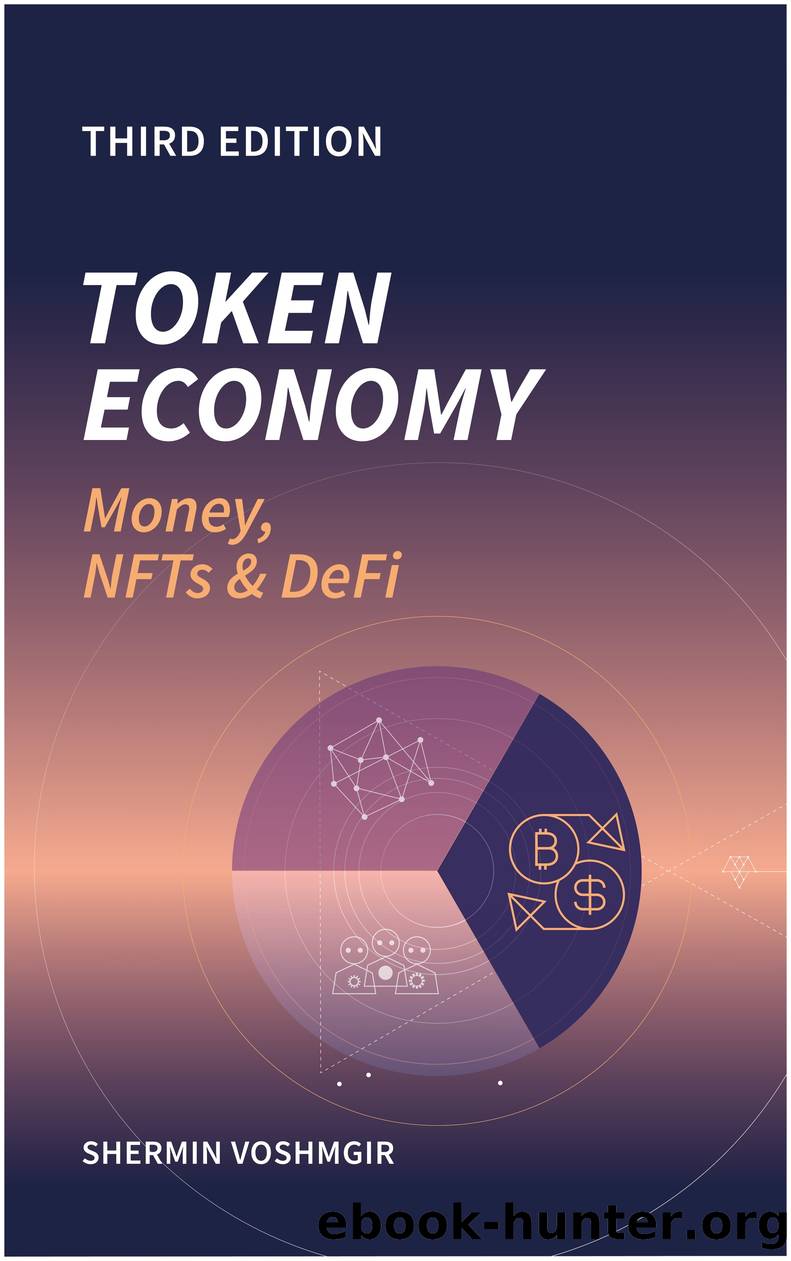Token Economy by Shermin Voshmgir

Author:Shermin Voshmgir
Language: eng
Format: epub
Tags: Business & Personal Finance
Publisher: Labirinto Ecletico Unipessoal LDA
Published: 2023-04-18T00:00:00+00:00
Composability & Money Legos
Due to the open source nature and composability of the Web3 stack, DeFi protocols can easily plug into each other like lego pieces, which is why DeFi components were referred to as âmoney legosâ in the early days of DeFi. By combining various DeFi protocols with each other, anyone can create completely new financial products without having to build all the financial components from scratch. Token holders can pick and choose financial infrastructure components â that is, money legos â to build personalized financial products on top of other existing financial components. âStable tokens,â âdecentralized exchanges,â and âdecentralized lendingâ can be combined to produce a completely new real estate product. Any private person could â in theory, and once the regulatory environment allows it â tokenize their real-world apartment, and use the tokens as collateral for a P2P lending protocol specialized in real estate assets, all while avoiding the level of bureaucracy that would have come with legacy financial systems.
The concept of composability is not restricted to Web3 and it can be also found in other computer architectures, natural systems and (wo)man-made systems â from biology, physics, chemistry, human communication, and other sociological phenomena. In the absence of composability â when information and know-how are restricted â creativity and innovation are also restricted. In social systems or computer systems, such restrictions are created artificially: through legal structures such as IP (intellectual property), behind the closed doors of offices, sealed papers, and walled gardens of server systems. Cartels are formed, and composability, creativity, and innovation are restricted as a result. Wherever composability exists, even in a limited way â as in the case of Web2-based Application Programming Interfaces (APIs) â it has proven to spur evolution and innovation cycles.
DeFi composability is an innovation booster for Web3 applications, similar to what APIs were for proprietary Web2 systems. APIs allow anyone to create interconnected Web2 services, on top of the data provided by other Web2 services. But Web2-based APIs are permissioned and highly complex, which means that they only allow others to access a restricted set of data that the owners of a Web2 service decide to share with other application programmers. In Web3, composability is the default mode.
Composability can also be a double-edged sword, as it can create security-, sustainability-, or privacy challenges which all need to be considered when designing DeFi applications. While composable DeFi applications are rapidly evolving, they are still nascent and often prone to exploits and attacks that could result from unintended programming mistakes that donât correspond with the intended business rules. The governance logic of the underlying smart contracts needs extensive auditing and bug fixing before they are launched, especially in light of a growing and complex network of interoperable DeFi applications that will be automatically enforced and can create unintended domino effects.
Download
This site does not store any files on its server. We only index and link to content provided by other sites. Please contact the content providers to delete copyright contents if any and email us, we'll remove relevant links or contents immediately.
International Integration of the Brazilian Economy by Elias C. Grivoyannis(57389)
The Radium Girls by Kate Moore(10915)
Turbulence by E. J. Noyes(7057)
Nudge - Improving Decisions about Health, Wealth, and Happiness by Thaler Sunstein(6643)
The Black Swan by Nassim Nicholas Taleb(6204)
Pioneering Portfolio Management by David F. Swensen(5616)
Rich Dad Poor Dad by Robert T. Kiyosaki(5162)
Zero to One by Peter Thiel(4834)
Man-made Catastrophes and Risk Information Concealment by Dmitry Chernov & Didier Sornette(4748)
Secrecy World by Jake Bernstein(3788)
Millionaire: The Philanderer, Gambler, and Duelist Who Invented Modern Finance by Janet Gleeson(3576)
Skin in the Game by Nassim Nicholas Taleb(3479)
The Age of Surveillance Capitalism by Shoshana Zuboff(3432)
The Money Culture by Michael Lewis(3291)
Skin in the Game: Hidden Asymmetries in Daily Life by Nassim Nicholas Taleb(3273)
Bullshit Jobs by David Graeber(3190)
The Dhandho Investor by Mohnish Pabrai(3176)
The Wisdom of Finance by Mihir Desai(3087)
Blockchain Basics by Daniel Drescher(2896)
